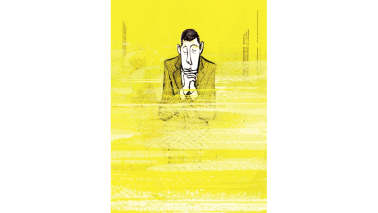Triple Bill
Royal Opera House, last perf. 15 May
There was a time when the thrill of a ballet première could be sensed the moment you entered the theatre. Today, the disillusioned public, tired of the high percentage of choreographic garbage it is frequently subjected to, takes little or no notice. It’s a pity, for I think that Liam Scarlett’s Asphodel Meadows deserved a buzzier atmosphere than the one that greeted its opening last week — even though there were a good number of ovations and calls at the end.
Set to Poulenc’s bubbly Concerto in D minor for two pianos and orchestra, the new ballet is a visually enticing example of outstanding choreographic composition, in which the classical idiom is cogently manipulated, though never betrayed. The overall effect is as sparkly as the music — indeed, musicality is one of this choreography’s most delectable ingredients — both in the now pleasantly quirky, now classically constructed choral moments and in the three dynamically contrasting duets. Joyous as it may look, the piece is also underpinned by references to death and recurring moments of sadness, mirrored in a masterly way in the dark hues of John MacFarlane’s intriguing costumes and effective sets. But the truly fascinating element of this new work is, in my opinion, the interaction between balletic codes and non-balletic ideas. Thanks to Scarlett’s refreshing choreographic inventiveness, the dancing never becomes trite or tiresome as there is always a surprising and unpredictable choreographic effect in store, whether it be an unusual thematic development or an intentionally anti-climactic ending. All in all, it is a massive achievement for a 24-year-old choreographer, and a work that restores the hopes of those who believe that ballet lies agonising on its deathbed.
Luckily, such a highly recommended novelty was well placed in this engaging triple bill. It was a real pleasure to see Christopher Wheeldon’s Electric Counterpoint again, a work that draws upon some of the latest trends in theatre-dance to focus on ‘reflection’, whether this be introspective thinking or the image reproduced by a mirror, the most important tool for a dancer. Thanks to a now amusing, now haunting computer-generated game of projections, the four interpreters end up interacting with themselves, in a majestic crescendo of choreography and emotions that develop from a series of spoken ‘reflections’ on the art of dancing. It was also sheer fun to savour once more Mats Ek’s irreverent take on Carmen, a colourful — some say vulgar — piece in which the story of the quintessential seductress is presented through a truly postmodern perspective.
As in the case of other Royal Ballet performances I have recently seen and reviewed, the dancing was simply fantastic. In Electrical Counterpoint, Sarah Lamb, Leanne Benjamin, Edward Watson and Eric Underwood hypnotised the audience with a performance to remember; in Asphodel Meadows, the six principals, Marianela Nuñez, Tamara Rojo, Laura Morera, Rupert Pennefather, Bennet Gartside and Ricardo Cervera elicited a number of well deserved ovations, while Rojo, Gartside, Kristen McNally and a superlative Thomas Whitehead amused and shocked in Ek’s controversial creation.
If you ever wondered what the hype about contemporary ballet — as distinguished from contemporary dance — is about, get a ticket and you will not be disappointed.





Comments